 |
Secret Forces
Nazism, a Gnostic-Manichean Sect - Part V
The Strange Personality of Adolf Hitler
Cunha Alvarenga
Alfred Rosenberg was truly the brains behind the Nazi Gnosis. He was born in 1893 in Estonia to a family of Baltic Germans. He received his engineering doctorate in Moscow in early 1917. One year later, fleeing the Communist Revolution he emigrated to Germany.
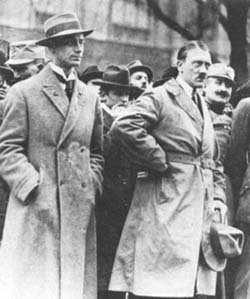
Rosenberg, left, present at Hitler's side from the beginning |
Always with a theosophical bent, Rosenberg entered the Thule Society, the occult group we mentioned in a previous article. For his remarkable learning, far surpassing the average mediocre mind, he caught the attention of Dietrich Eckart, also a member of the Thule group and editor of the People’s Observer.
It was Eckart who introduced him to Hitler at the beginning of his political career. Rosenberg was one of the first to enlist in the Nazi Party and “his influence was decisive in the formation of the future ‘Lord of Germany,’ in whom he even further instilled anti-Semitism and the proclivity to the occult” (apud Hitler and the Cathar Tradition, p. 262).
Anti-Catholic bend of Nazism
In his key-work The Myth of the 20th Century, the most influential Nazi text after Hitler’s Mein Kampf, Rosenberg rejects the Old Testament; in the New Testament, he repudiates principally the Epistles of St. Paul. For this theoretician of Nazism “there is a negative Christianity and a positive Christianity. The former is linked to the image of the crucified Jesus, the latter to the image of the living Jesus” (ibid., p. 264). Rosenberg does not consider early Christianity as an enemy, since it exalts the personality of the living Jesus, but - following the path of the Gnostics to whom he adheres - he rejects the Crucifixion and Resurrection of Our Savior as mystifications of the Eastern mentality.
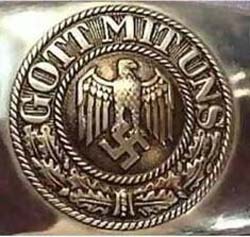
A pantheist concept of God akin to the Gnostic myths |
His hatred of the Catholic Church as a social body is strongly avowed throughout his book. The notion of a one universal Church, whose dogma and morals should influence the life of the State – its culture, art and science – is for him “the remains of the chaos of those men who poisoned our minds.” From this perspective, he approves Martin Luther as an important step – but one that did not go far enough – in reasserting the “Aryan spirit” and setting up the idea of nationalism against the universal monarchy of the Pope” (apud Hitler and the Cathar Tradition, p. 264).
To the philosopher Rosenthal, “every event is significant and expresses the eternal fight between the forces of light and darkness. From his perspective, all the heretics, the Cathars above all, are considered heroes in a tragedy of cosmic dimension. In this gigantic battle of the German-Nordic peoples of Europe against Roman universalism and conquering Catholicism, the history of the Albigensians, Valdenses, Cathars, early reformers, Huguenots and Lutherans play an avidly epic role” (pp. 264-265).
According to his work The Myth of the 20th Century, the German mind rejects the static concept of one God, Sovereign of the Universe, and breaks with the Old Testament. With this rejection the German mind follows the spirit of Luther who “was liberated from the Jews and their lies.” To this cascade of blasphemies, the intellectual of Nazism adds that death should not be considered, as taught by Christianity, as the wages of sin (Rom 6:23); on the contrary it is a simple natural phenomenon that “does not disturb the eternal process that existed before us and will continue to exist after us” (p.268). Clearly these pantheist ideas are not original, but copied from the neo-Platonic School of Alexandria.
[Note: Philo of Alexandria, 25BC-50AC, made a synthesis of the Jewish Kabbalah and the Hellenist Gnosis of his time, considered one of the most encompassing works of Gnosis. It is normally referred to as the Gnostic School of Alexandria or neo-Platonic School of Alexandria. It was the basis for many heresies in the first centuries of the Church.]
The preternatural presence in Hitler’s life
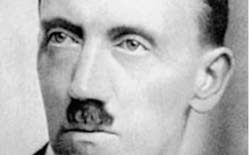
A gaze that speaks of his tendency to the occult |
About the enigmatic personality of Hitler, Jean M. Angebert comments: “What is certain is that the prophetic, mystic and visionary aspects of this modern warlock presents to the world the hypocritical physiognomy of a harsh, insensible man who is unscrupulously able to condemn to death any person who stands in his way” (p.279).
Either with individuals or before a multitude, Hitler revealed a great hypnotic power. Someone affirmed that he was possessed by invisible powers, his “unknown superiors” referred to by Hermann Rauschning. In his work Hitler Told Me, he describes the Führer as an antenna in touch with frightening, superior beings:
“One of his domestics told me that Hitler often awakened at night shouting convulsively for help. He used to remain paralyzed sitting at the edge of his bed, overcome by a panic that made the whole bed shake. He shouted incomprehensible and clipped phrases, breathing with difficulty as if he were being suffocated. The same person reported one of these episodes to me with details that I normally would not have believed if the person had not been so certain.
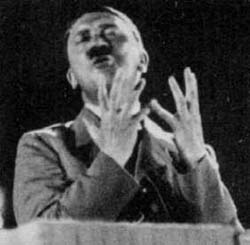
Above, an hypnothic capacity exerted through theatrical skills. Below, speaking to a mesmerized multitude.
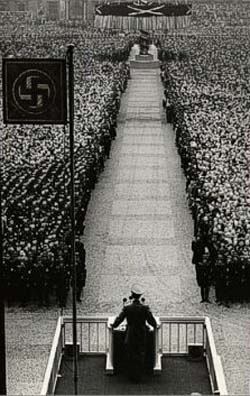 |
“During one of these crises, Hitler was standing in the middle of his room tottering, gazing around him with a hallucinated stare. Then he roared: “It is him! It is him! He is here!” His lips were blue and the sweat poured from his face in large drips. Suddenly he started to spell out numbers without meaning, then words and parts of phrases. It was horrible. He used bizarre and utterly strange words. Then he became quiet, although his lips continued to move. Someone began to rub him and gave him something to drink. Suddenly he roared again: “There! There in the corner! Who is there?” He pounded his foot on the floor and continued to roar. Someone told him that there was nothing unusual there; then little by little he calmed down” (Hermann Rauschning, Hitler m’a dit , apud Hitler and the Cathar Tradition, p. 282).
“His words, ‘I follow the way that Providence points me with the confidence of a sleep-walker,’ indicates the lines of his supra-normal powers. But, from whom did he receive those powers? Would it be per chance from the Thule group that had initiated him in Eastern esotericism? Would it be from the mysterious man in the green gloves sent to him by the warlocks of Tibet? Or would it be from an older revelation?” (p. 283)
Hitler hated hunters because he believed human souls were reincarnated in the bodies of animals, like the Cathars and Buddhists who believe in metempsychosis. (p.287) Once he declared: “Even those who commit suicide indisputably return to nature - body, soul and spirit” (Adolph Hitler, Libres Propos, Flammarion, Paris, 1952, apud Hitler and the Cathar Tradition, p. 291).
From all that is affirmed in the book of Jean M. Angebert one thing seems certain to us: the Gnostic and occult character of National Socialism both in the actions and the aims of its principal leaders. It is another confirmation that a natural consequence of Gnosis is Socialism.
In his book Out of the Night, about the fight of Communists and Nazis after World War II, Marxist Jean Valtin reported the surprise and unease of the Communist grassroots in Germany who received the instruction not to resist the partisans of Hitler.
A little before the fall of Berlin, Goebbels proclaimed in a radio speech that even though National Socialism was being defeated by arms, it would emerge victorious with the implantation of Socialism throughout the world. Considering the Hegelian origins of Marxist Socialism and its Gnostic roots, we can easily conceive that both National Socialism and Marxist Socialism could well reinforce each other in the dialectical shock of their apparent opposition.

Posted May 15, 2008
Translated from Catolicismo, September 1971
History | Home | Books
| CDs | Search
| Contact Us | Donate

© 2002-
Tradition in Action, Inc. All Rights Reserved
|
 |

|
|